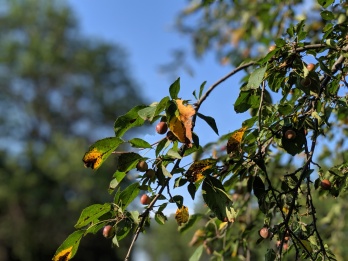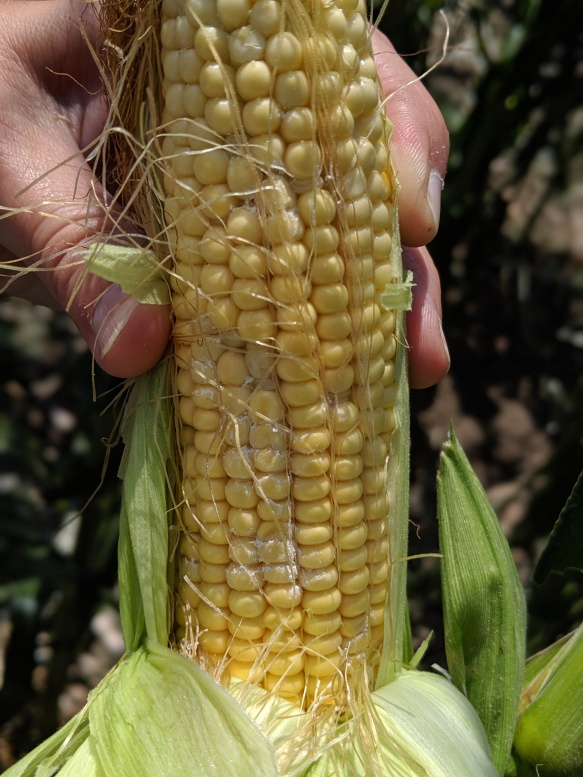Upcoming Events
Aug. 12-14:Nebraska Grazing Conference, Kearney
Aug. 13:Soybean Management Field Days, near Sargent
Aug. 14: Soybean Management Field Days, near Pilger
Aug. 15:Soybean Management Field Days, near Plymouth
Aug. 16:Soybean Management Field Days, near Waverly
Aug. 19:Cash-Rent Workshop, 10 a.m.-2 p.m., Library, St. Paul, RSVP: 308-754-5422
Aug. 19:Flame Weeding Workshop, ENREC (former ARDC) near Mead
Aug. 19: CSI for Youth: Estimating Corn Yields, 5 p.m., jrees2@unl.edu
Aug. 19: Ag Land Management Webinar, 6 p.m., Register: https://agecon.unl.edu/landmanagement
Aug. 19: UBBNRD Public Hearing, 7 p.m., Holthus Convention Center, York
Aug. 20:Summer Crop Field Day, Stumpf Farm near Grant
Aug. 20:Cash-Rent Workshop, 9 a.m.-Noon, Extension Office, Wilber, 402-821-2101
Aug. 20: York Co. Corn Grower Plot Tour, 5-7 p.m.
Aug. 21:Cash-Rent Workshop, 1-4 p.m., Extension Office, Lincoln, RSVP: 402-441-7180
Aug. 21-22:Unmanned Aerial Systems Tech Forum, K-State Polytech Institute, Salina, KS
Aug. 22: Soil Health Training, 8 a.m.-5 p.m., ENREC near Mead
Aug. 22:West Central Crops & Water Field Day, 8 a.m.-4 p.m., RSVP: 308-696-6700
Aug. 23-Sept. 1: Nebraska State Fair
Aug. 27:Soybean In-Field Production Training, 8 a.m.-5 p.m., ENREC near Mead
Aug. 28: Corn In-Field Production Training, 8 a.m.-5 p.m., ENREC near Mead
Crop Update and Hail Damage: While I don’t remember numbers as well, calendar dates are something I tend to remember. And, in agriculture, there’s numerous dates that accumulate over one’s life from hail, tornado, blizzard, flood, and wind events. I was reflecting on the Aug. 6th hail storm that occurred in Merrick, York, and Seward counties in 2018. This past week on August 7th, some woke up to hail/wind damage in Adams, Clay, and Nuckolls counties. The tree damage was incredible. Michael Sindelar, Clay Co. Educator, and I surveyed damage a day later. My estimation of the worst hit crops: corn around 80% defoliation with varying percentages of greensnap above/below ear and soybeans around 50% defoliated/broken off/with at least 50% pods on the ground. Where hail stones hit the ears, the kernels are mushy and mold is already setting in on corn at milk stage. There’s also mold setting in on soybean pods hit with hail stones. It’s hard to receive crop damage any time. The good news is that nothing appears to be a total loss; the majority of what we looked at was less than 40% defoliated and in general, the hail did not seem to penetrate the stalks, thus early stalk rot doesn’t appear to be setting in. Pictures at https://jenreesources.com.

Tree Problems: The majority of my questions the past 10 days were regarding tree leaves turning yellow and dropping from trees. They look stark against green grass. In general, what’s happening is the fact that we’ve had high humidity for a period of time now and we’ve had rain throughout spring and summer. Fungal pathogens thrive in these conditions. So, ornamental/flowering pears have pear rust; crabapples and apples have scab and also cedar-apple rust (depending on varieties); maples, ash, sycamores are showing anthracnose; and a number of other fungal leaf spots are observable on shade trees in general. Evergreen trees show various fungal needle spots. Ultimately, we don’t recommend doing anything for these diseases this time of year. We typically don’t recommend to spray shade trees in general, but fruit and evergreen trees should be sprayed in the spring if fungal diseases have occurred in the past. So, fungal diseased leaves may drop early and you may or may not observe a new flush of leaves yet this year. These fungal diseases won’t kill deciduous trees. They can kill evergreen trees over a period of years.
Oak leaves turning brown in clusters was also observed this past week. Sometimes
browning of leaves can be due to a fungal disease called anthracnose. Most of what I’m seeing, I believe, is environmental. It could be due to changes in hot/cool and periods of heavy moisture followed by lack of moisture on trees that had a huge flush of leaves due to moisture this spring. I really don’t know the cause for sure, but it doesn’t appear to be disease related from what I can tell. We wouldn’t recommend doing anything for the trees at this time.
UBBNRD Public Hearing: The Upper Big Blue NRD will hold a public hearing and informational open house on Aug. 19 at 7:00 p.m. at the Holthus Convention Center. The purpose is to receive comments on proposed changes to District Rule 5 – Ground Water Management Area Rules and Regulations. A complete copy of Rule 5 and the proposed changes are available at the district office and at www.upperbigblue.org/publichearing. The public will have the opportunity to learn more about these proposed changes and their effects, and address NRD board members about their concerns or support.
The proposed changes would stipulate that an approved nitrification inhibitor must be applied at the manufacturer’s recommended rate with pre-plant nitrogen fertilizer in the following situations: The application of anhydrous ammonia prior to March 1; The application of all nitrogen fertilizers other than anhydrous ammonia after February 29. In addition to these requirements, in Phase II and Phase III areas pre-plant application of nitrogen fertilizer shall not exceed 120 lbs. per acre. The remaining nitrogen fertilizer may be applied post plant. Prior to applying nitrogen fertilizer, but no later than April 1 of each year, each operator in the management area will be required to report information regarding the use of best management practices. For more information, visit www.upperbigblue.org or call (402)362-6601.
York County Corn Grower Plot Tour will be held Aug. 20th from 5-7 p.m. at 1611 Rd. 14 east of York. Pizza and refreshments will be provided and check out the latest hybrids. Guess the winning yield without going over and win a $50 gas card. All are welcome!
*End of News Column. Hail damage photos below.

Pitting from hail stones can be observed on corn stalks and husks. The damage doesn’t seen to be penetrating stalks beyond the surface, thus stalk rot is not setting in at this time. This field also had wind damage where plants were broke off both above and below the ears.

Kernels are mushy and damaged where hail stones hit and mold is already setting in.

Soybean in worst areas were bent over/broken off with hail damage evident on stems.

Soybean defoliation and soybean bent over from wind and hail damage. They will most likely try to upright themselves somewhat. Stems will become brittle over time and many pods were visible on the ground when lifted up.




































